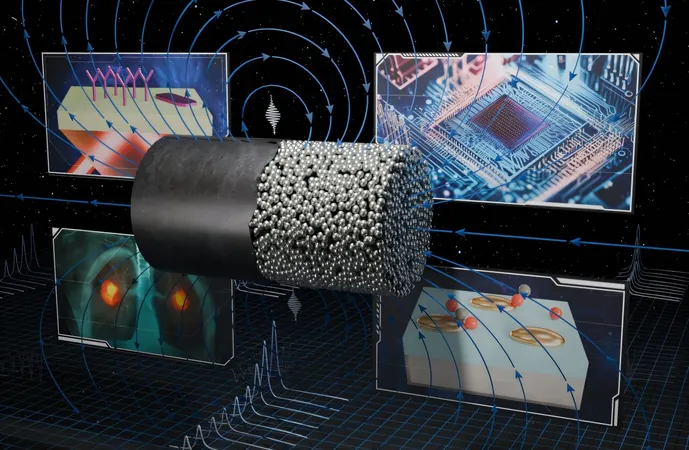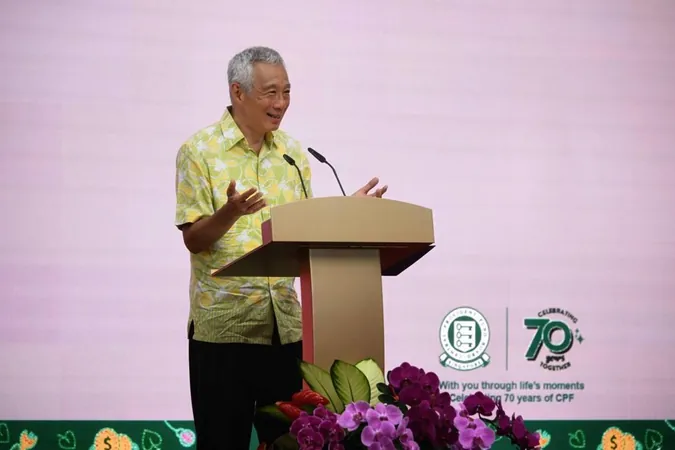
Breakthrough Simulation Shows Electrons in Action!
2025-05-21
Author: Siti
Revolutionizing Electron Dynamics with Real-Time Simulations
A groundbreaking collaboration between the Department of Energy's Oak Ridge National Laboratory (ORNL) and North Carolina State University (NCSU) has led to the creation of an extraordinary simulation tool. This innovative technology predicts the movement of tens of thousands of electrons in materials in real time, instead of relying on outdated computation methods.
Leveraging the power of the unprecedented Frontier supercomputer at ORNL, renowned as the first to break the exascale barrier, the research team developed a cutting-edge real-time, time-dependent density functional theory (RT-TDDFT). This advancement allows for modeling systems with up to 24,000 electrons, equivalent to studying 4,000 carbon atoms or 2,400 water molecules.
Uncovering the Mysteries of Quantum Mechanics
Led by ORNL’s own visionaries Jacek Jakowski and Panchapakesan Ganesh, this research offers critical insights into the quantum-level responses of materials, crucial for the advancement of technologies like photovoltaic cells and sophisticated information systems. Their groundbreaking findings have been published in the Journal of Chemical Theory and Computation.
"Observing thousands of electrons in real-time allows us to gain incredible insights into material behavior at a quantum level," stated Jakowski. This research holds key implications for understanding how metallic nanoparticles—tiny metals impacting optical properties—interact with incoming light.
Why This Matters for Future Technologies
Understanding the movement of these electrons is essential for fostering innovations in optical technologies and quantum information devices. The challenge has always been to capture the ultrafast dynamics of electrons within nanoscale materials and this achievement marks a monumental leap forward.
By enabling simulations of electron dynamics in real-world materials, RT-TDDFT opens the floodgates to the design of novel materials with adjustable electronic, optical, and magnetic properties—supercharging advances in everything from more efficient solar cells to faster computing and enhanced quantum technologies.
How It Works: The Science Behind the Simulation
RT-TDDFT is a sophisticated quantum mechanical technique that simulates how electrons react when energized by external stimuli, like electromagnetic fields or light. Jakowski elaborated, "It’s akin to watching a slow-motion replay of electrons in a metal responding to a flash of light—except with extraordinary detail at the quantum level!" By harnessing the immense computational capabilities of the Frontier supercomputer, researchers can now predict material behaviors with unprecedented scale.
The Path Forward: Exploring New Possibilities
The open-source RMG code designed by NCSU plays a crucial role in facilitating these simulations on powerful exascale machines, paving the way for researchers to explore a multitude of materials and phenomena. The collaboration underscores a commitment to advancing simulated electron behavior at realistic scales, with hopes of propelling research in fields like spintronics and quantum information science.
Looking ahead, the project aims to tackle even more complex scenarios, promising exciting discoveries in the realm of quantum physics and enhanced simulations. "These advancements are promising for the creation of bespoke devices with tailored properties," remarked Professor Bernholc. The partnership and achievements bolster a future ripe with potential for technological breakthroughs that could transform our world.




 Brasil (PT)
Brasil (PT)
 Canada (EN)
Canada (EN)
 Chile (ES)
Chile (ES)
 Česko (CS)
Česko (CS)
 대한민국 (KO)
대한민국 (KO)
 España (ES)
España (ES)
 France (FR)
France (FR)
 Hong Kong (EN)
Hong Kong (EN)
 Italia (IT)
Italia (IT)
 日本 (JA)
日本 (JA)
 Magyarország (HU)
Magyarország (HU)
 Norge (NO)
Norge (NO)
 Polska (PL)
Polska (PL)
 Schweiz (DE)
Schweiz (DE)
 Singapore (EN)
Singapore (EN)
 Sverige (SV)
Sverige (SV)
 Suomi (FI)
Suomi (FI)
 Türkiye (TR)
Türkiye (TR)
 الإمارات العربية المتحدة (AR)
الإمارات العربية المتحدة (AR)